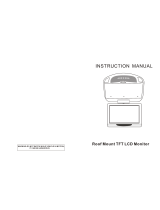
19
Introduction
Reading the Manual
Few people like reading manuals. Many software users
prefer to point and click their way around a program to
discover what it does and how it works. MAGIX midi stu-
dio generation 6 has an intuitive interface so if you know
a little about sequencers you will probably be able to learn
how most of the program works by this approach. You can
dip into the manual to look up any features you require
more information about. If you are a newcomer to se-
quencing we strongly recommend working through the
Tutorial. It uses a practical, hands-on approach to explain
all of MAGIX midi studio generation 6’s main functions
and by the end you should be well on the way to becoming
a sequencing expert. We recommended even the more ex-
perienced user read the Tutorial in order to become famil-
iar with how the various parts of the program work. Fi-
nally, do at least flip through the Reference section. It not
only contains detailed information about every menu,
window and function in MAGIX midi studio generation 6
but it also includes examples of how many functions can
be used in a practical way.
Digital Audio Basics
If you’re familiar with the principles of digital audio you
can skip this section. This is a brief introduction to the
subject to help you get the most out of MAGIX midi studio
generation 6’s digital audio playback facilities. Digital au-
dio recording is the process of converting audio data—
sound—into digital data which can be stored on a com-
puter. The device which does this is built into most sound
cards and is known, quite helpfully, as an Audio-to-Digital
converter. This is often abbreviated as A-to-D, ATD or just
AD.
To convert the digital data back into sound, the card uses a
DA (Digital to Audio) converter. To capture sound, the AD
converter takes a sample of a sound source a specific num-
ber of times per second. This is known as the sample rate
and is measured in kHz or so-many thousand samples per
second. The higher the rate, the more samples the AD
converter takes and the more accurate the digital represen-
tation of the sound will be. The sampling resolution is the
accuracy or fineness of the measuring scale used to store
the numbers and is measured in bits. Currently there are
two resolutions commonly in use: 8 bits and 16 bits. To
give you an idea of the relevance of the sampling resolu-
tion, imagine two people are building a house. One is us-
ing a measuring stick marked to the nearest foot. The




















